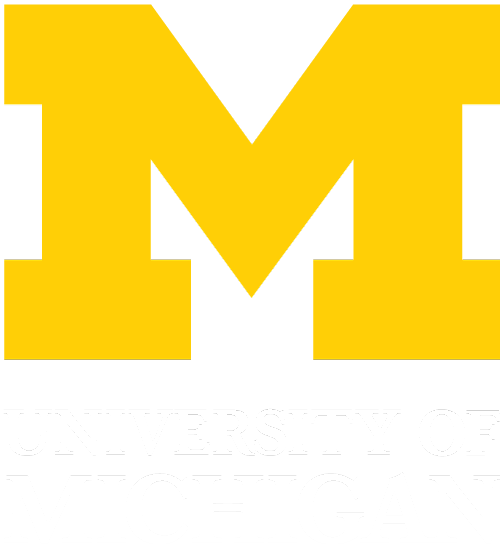
Over, Under, Across
U-M’s Pioneers in Waterway Engineering
Faculty and graduates of the University of Michigan contributed to some of the Detroit River’s most iconic engineering projects, helping to make it the world’s most active shipping corridor in the early 20th century.
In 1959 Darien Pinney, Judy Robinson, and Susan Ott (left to right) became the first three women to study in UM’s Department of Naval Architecture and Marine Engineering. (Courtesy of the Bentley Historical Library, The University of Michigan.)
Naval Architecture and Marine Engineering at the University of Michigan
The growing importance of Detroit River shipping inspired the University of Michigan to offer three targeted courses in the Engineering Department starting in 1893: Naval Architecture, Marine Engines, and Ship Building. By 1900, increasing enrollments in these courses prompted the University to found a separate Department of Naval Architecture and Marine Engineering (NAME). The department’s curriculum proved a success, with faculty and graduates transforming the Detroit River’s waterscape with bridge, tunnel, and ship-building projects. The University even introduced “water transportation” as a departmental concentration in 1925.
The symbiotic relationship between NAME and the Detroit River began with NAME’s first department head, Herbert Sadler. A hands-on academic, he collaborated with prominent Detroit naval architect Frank Kirby to design passenger ships for the Detroit and Cleveland Navigation Co., the City of Detroit, and many other regional clients. His fellow professor Louis Baier also published notable papers on Great Lakes ship design, with titles such as “Diesel Engines on the Great Lakes and Inland Waterways” and “The Great Lakes Bulk Cargo Carrier: Design and Power.”
Students test a model of a paddle-wheel passenger vessel in the University of Michigan Tow Tank, which has served as a hydrodynamics lab for the Department of Naval Architecture and Marine Engineering ever since its construction in 1904.
(David Smith Photography, “Testing a model of a paddle-wheel passenger vessel in the U-M Tow Tank,” licensed under CC-BY-4.0. Courtesy of the Bentley Historical Library, The University of Michigan.)
One of NAME’s most unique features in its early days was a 360-foot long, 22-foot wide, and 10-foot deep “tow tank” built into the West Engineering Building’s basement. When the tank opened in 1905, it was the first of its kind to be built and owned by an educational institution. This deep basin allowed marine engineering students to conduct experiments on ship resistance, shallow water effects, streamline flow, wave profiles, wake, and rolling using a realistic model. The tank remains in use today, with ongoing renovations and improvements.
Practical research in the tow tank coupled with the expertise of NAME’s professors led to innovations that transformed Great Lakes shipping, including improvements in propeller design, stern flow, and vibration control. Strangely, the Detroit River’s booming shipping economy was partially the product of engineering research that took place in an Ann Arbor campus basement.
The University’s Bridge and Tunnel Projects

Workers climb the skeleton of the Ambassador Bridge, under construction from 1927 to 1929. For two years after its completion it was the world’s longest suspension bridge, stretching 9,602 feet between Detroit and Windsor, Canada.
(Courtesy of the Bentley Historical Library, The University of Michigan.)
References
“Ambassador Bridge.” Encyclopedia of Detroit. The Detroit Historical Society, 2022. Access.
Austin, Dan. “Belle Isle Bridge (old).” Historic Detroit, 2022. Access.
Burton, Clarence. The City of Detroit, Michigan, 1701-1922. The S. J. Clarke Publishing Company, 1922.
Detroit-Windsor Tunnel. Detroit-Windsor Tunnel: An American Roads Company, 2022. Access.
“Emil Lorch: Biography.” Emil Lorch Papers: 1891-2004. Bentley Historical Library, The University of Michigan, 2022. Access.
“George McDonald McConkey.” Faculty History Project. The University of Michigan, 2011. Access.
Gleit, Jonathan. “The Detroit River Tunnel Few Have Seen: The Michigan Central Railway Tunnel.” The Detroit Historical Society, April 12 2016. Access.
“Herbert Charles Sadler.” Faculty History Project. The University of Michigan, 2011. Access.
Peckham, Howard H. The Making of the University of Michigan, 1817-1967. The University of Michigan Press, 1967.
“Physical Model Basin.” Marine Hydrodynamics Laboratory. The Universityof Michigan, 2022. Access.
Shaw, Wilfred B., ed. The University of Michigan: An Encyclopedic Survey, Volumes I-V. The University of Michigan Press, 1942.
“U-M Detroiter Hall of Fame: Cornelius Henderson.” U-M Detroit. The University of Michigan, 2022. Access.


